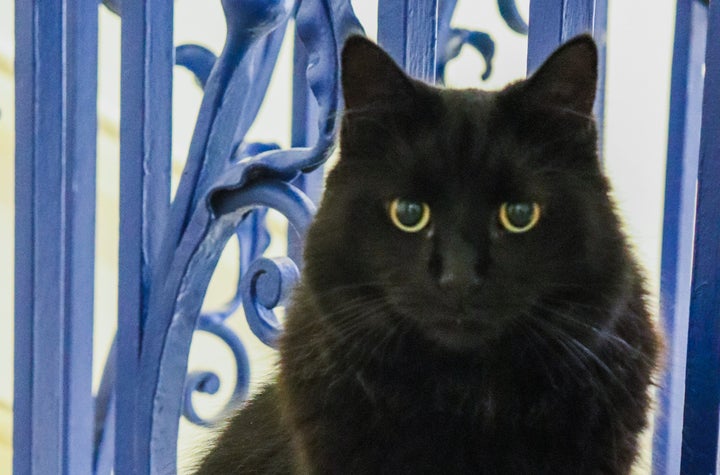
A senior government mouser had to be rushed into emergency care after eating toxic lily leaves.
Ossie, the cabinet office cat, was taken to an animal hospital where he was given fluids and charcoal treatment.
Civil servants, who help look after the cat, grew very concerned for Ossie after they discovered he had eaten part of the plant.
Lilies are highly toxic to cats and the vet charity PDSA warns that even if a cat licks the plant they are likely to develop kidney damage. If a cat is left untreated it could lead to kidney failure and death.
However, Ossie’s vet gave him a “good chance of success” and on Thursday afternoon a senior cabinet minister revealed he had been allowed home.
Nadhim Zahawi, chancellor of the Duchy of Lancaster, shared a photo of the cat, saying: “Very pleased to report that Ossie is now back in the Cabinet Office having had treatment and is on the road to recovery!”
A member of staff had put up posters of Ossie around the office informing colleagues of his accident and asking for help to fund his treatment that could cost up to £1,000.
The rescue cat joined the department with his mother Evie in 2016 tasked with the job of ridding the Whitehall office of its mouse problem.
Earlier in the day a cabinet office source told HuffPost UK: “Ossie is the cutest little cat and we are missing him roaming the corridors of 70 Whitehall.
“We’re all keeping our fingers crossed that his treatment works and he will back in the building and reunited with his mum, Evie, very soon.”
His mother had apparently been spotted sitting by a picture of Ossie while he underwent treatment.
The two cats came from the Celia Hammond Trust and are looked after by donations from staff.
They are among a number of cats brought into government to deal with rodent infestations.
Downing Street has its own mouser Larry who arrived in 2011 tasked with ridding No.10 of a rat problem.
Larry and Palmerston - the former foreign office cat - were sometimes seen brawling in the street.
Palmerston retired in 2020 to move to the countryside and “spend more time relaxing away from the limelight”.
Meanwhile, the Treasury has a mouser called Gladstone.
PDSA tells pet owners to contact their vet “immediately” if they believe their cat has eaten or licked any part of a lily plant and to “never wait for symptoms to develop”.
Symptoms usually appear within a few hours and include vomiting, not eating, drooling, urinating more, twitching and seizures.
